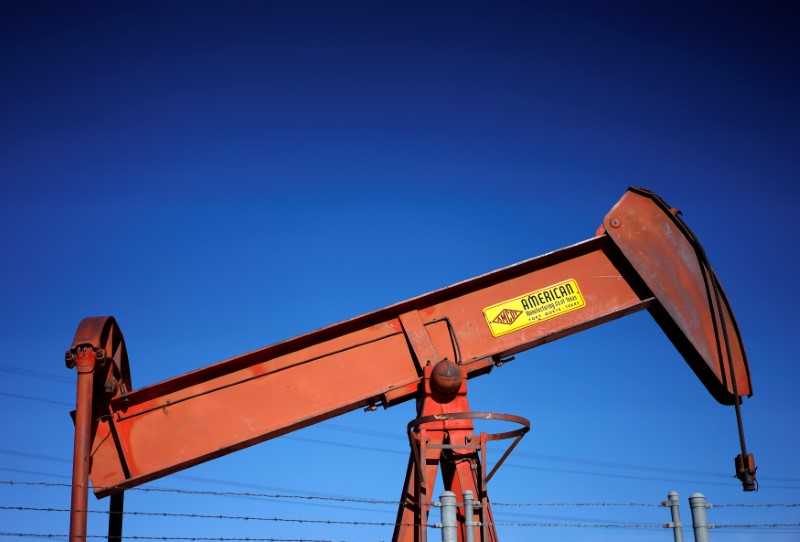By Amanda Cooper
LONDON (Reuters) - Growth in oil supply next year is expected to outpace an anticipated pick-up in demand that will push global consumption above 100 million barrels per day (bpd) for the first time, the International Energy Agency said on Wednesday.
The Paris-based IEA said production outside the Organization of the Petroleum Exporting Countries would grow twice as quickly in 2018 as it will do this year, when OPEC and 11 partner nations have restrained output.
"For total non-OPEC production, we expect production to grow by 700,000 bpd this year, but our first outlook for 2018 makes sobering reading for those producers looking to restrain supply," the IEA said.
"In 2018, we expect non-OPEC production to grow by 1.5 million bpd which is slightly more than the expected increase in global demand."
Brent crude futures extended losses after the report, falling 64 cents on the day to $48.08 a barrel by 0804 GMT, from around $48.26 prior to the release.
Oil inventories across the world's most industrial nations rose in April by 18.6 million barrels to 3.045 billion barrels, thanks to higher refinery output and imports. The IEA said stocks were 292 million barrels above the five-year average.
The agency continued to forecast an implied shortfall in supply relative to demand for the second quarter of this year.
But it said slowing demand growth in China and Europe in particular, as well as increasing supply, meant the deficit should narrow to 500,000 bpd from a prior estimate of 700,000.
OPEC and 11 rival exporters including Russia have agreed to extend a deal to limit supply by 1.8 million bpd to March 2018, in order to cut global inventory levels.
Saudi Energy Minister Khalid al-Falih has reiterated the group's commitment to do "whatever it takes" to force a drawdown in global inventory levels.
"We have regularly counselled that patience is required on the part of those looking for the rebalancing of the oil market, and new data leads us to repeat the message," the IEA said.
"'Whatever it takes' might be the mantra, but the current form of 'whatever' is not having as quick an impact as expected."
"Indeed, based on our current outlook for 2017 and 2018, incorporating the scenario that OPEC countries continue to comply with their output agreement, stocks might not fall to the desired level until close to the expiry of the agreement in March 2018," the IEA said.
U.S. OUTPUT RISES
The price of oil has fallen 12 percent since May 25, when OPEC and its partners agreed to extend their supply cut, as inventories around the world have been slow to drain.
Rising output from the United States has been one of the main factors behind the stubbornly high stock levels and the IEA estimates U.S. production will continue to grow aggressively into next year.
"Our first look at 2018 suggests that U.S. crude production will grow year-on-year by 780,000 but such is the dynamism of this extraordinary, very diverse industry it is possible that growth will be faster," the agency said.
The forecast for U.S. total oil production for 2017 has been revised 90,000 bpd higher, to average 13.1 million bpd, following further rig additions and increased spending.
Crude output from OPEC nations rose by 290,000 bpd in May to a 2017 high of 32.08 million bpd, still within the confines of the supply deal, after comebacks in Libya and Nigeria, which are exempt from cuts.

Compared to May 2016, OPEC crude production was down by 65,000 bpd, the IEA said. Non-OPEC output rose by 295,000 bpd month-on-month in May to 57.8 million bpd, 1.25 million bpd higher than a year earlier.